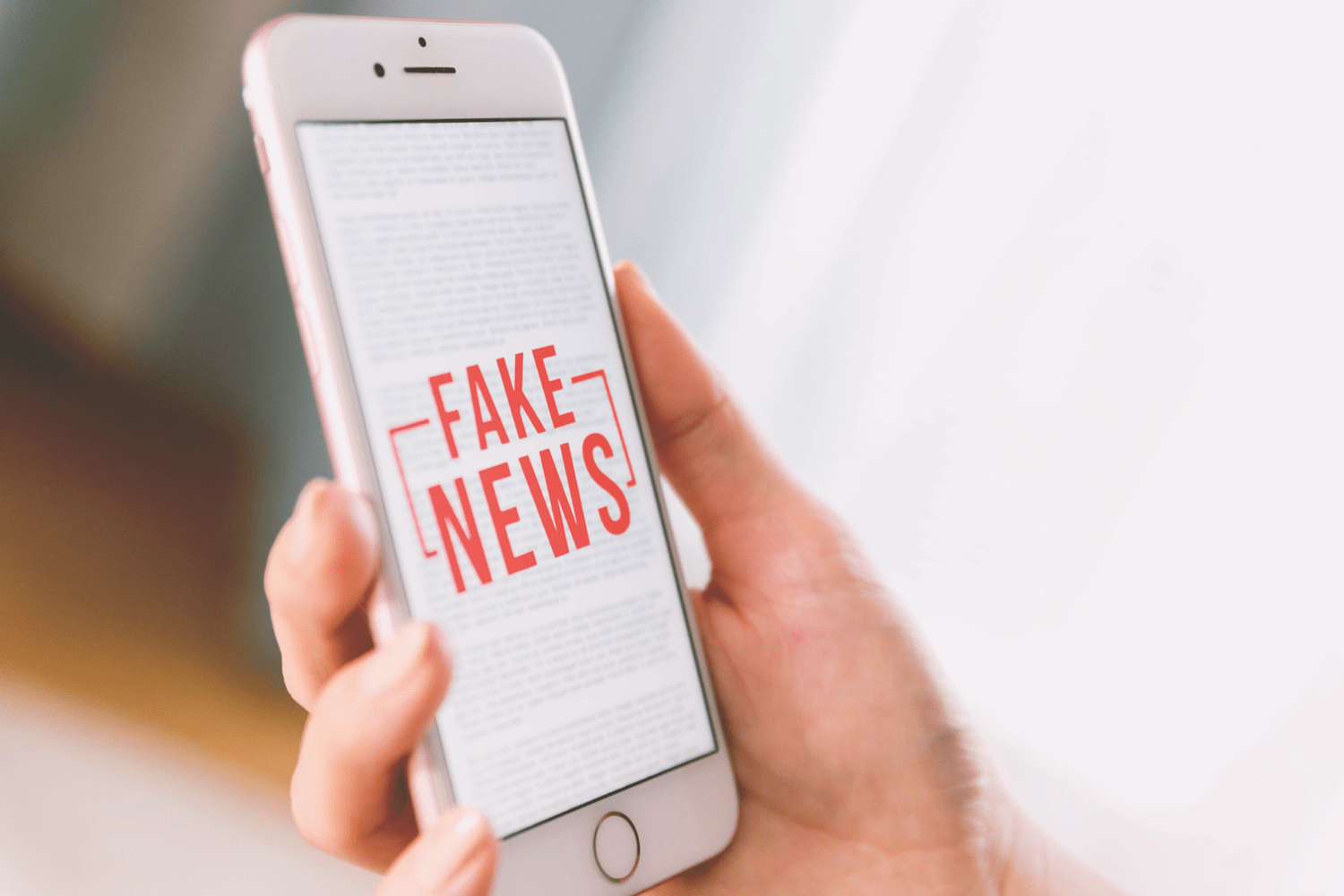How Blockchain Can Prevent the Spread of Fake News

What’s the current state of blockchain and “fake news”?
In recent years, a great deal of attention has been devoted to the supposed rise in “fake news”: a term that can cover everything from satire and misleading content to articles that are completely fabricated. According to the 2018 Edelman Trust Barometer, which surveyed respondents in 28 countries:
- 59 percent of people said they were unsure about the reliability of information they see in the media.
- 63 percent said they believe the average person does not know how to differentiate journalistic facts from falsehoods.
- Almost 70 percent said they worry about fake news being used as a “weapon.”
“Deepfakes,” manipulated audio and video files that are intended to mimic a politician or celebrity, are one of the biggest potential concerns regarding fake news. In 2018, for example, BuzzFeed created a deepfake video of Barack Obama (with the help of a voiceover from actor Jordan Peele) to raise awareness of the technology. However, although deepfakes have generated a firestorm of controversy, thus far none of them have been convincing enough to have a noticeable real-world effect.
Language generation models such as GPT-3, which was released in June 2020, may also pose a fake news risk. GPT-3 has demonstrated highly advanced capabilities for producing several paragraphs of realistic English text, and even correctly answering certain types of human-supplied questions. This has prompted speculation that malicious actors could use GPT-3 for nefarious ends: for example, automatically creating article after article of false (but realistic-sounding) writing.
While deepfakes and GPT-3 have so far only posed a theoretical problem, rapid technological advancements could mean that fake news becomes a much bigger, much thornier issue in the near future. Enter the blockchain: a peer-to-peer technology that uses transparent, distributed ledgers to record information in a way that makes it virtually impossible to falsify or hack. The blockchain has been proposed as an answer for everything ranging from cryptocurrencies to identifying counterfeit wines—so why not for combating fake news as well?
The IT research and analysis firm Gartner has predicted that by 2023, up to 30 percent of news and video content will be authenticated by the blockchain, helping to counteract deepfake technology. But what would such a solution look like in practice? To find out, let’s look at how some media organizations are already using the blockchain.
How are media organizations using the blockchain?
When discussing the problem of fake news, we need to distinguish between two different issues:
- Users and third-party media outlets misinterpreting the original source or taking it out of context.
- Media outlets that have a reputation for misleading or false reporting.
Media organizations looking to apply the blockchain in journalism have so far used it to address the first issue: proving the authenticity of their media content. In July 2019, the New York Times confirmed that it was working on a blockchain-based solution called the News Provenance Project to help fight the spread of fake news.
The project’s first area of study was how to counteract misinformation by using the blockchain to include context with visual content. For example, a photo taken of one news event (say, a natural disaster such as a wildfire or hurricane) might be reused to illustrate a completely different news event at a different time and location.
After conducting interviews with dozens of news consumers, the New York Times came to several conclusions about the best way to fight visual “fake news,” including:
- People want to know the facts about the news, but prefer to form their own opinions. Questions and prompts can help users think for themselves and learn to recognize signs of misinformation.
- Including supplemental details about visual media (such as the photographer, original publisher, date, location, etc.) helps people think for themselves without feeling unduly pressured or influenced.
- Fighting fake news is most important for the stories that people care the most about, making them willing to seek out additional context. Being skeptical enough to fact-check a news story is generally the exception, not the norm.
- Changing people’s inaccurate understanding of a news story is more difficult the longer that they are exposed to it. This means that fact-checking should ideally occur before users even encounter the misinformation.
The NYT then built a proof of concept in collaboration with IBM: a simulated, Facebook-like social media website that includes pop-up windows providing accurate metadata for each photograph on a user’s timeline. This PoC website uses the blockchain to store information such as the image’s photographer, time and date, location, caption, and other photos from the same event. According to the project’s website, future directions for the News Provenance Project include working with newsrooms and content moderators to bring the proof of concept from research to reality.
In April 2020, Italy’s top wire service Agenzia Nazionale Stampa Associata (ANSA) announced that it would launch a similar blockchain-based initiative in collaboration with Ernst & Young. Called “ANSAcheck,” the tool will allow readers to verify the accuracy of an article by clicking on a tracking label that provides context such as the date and time the article was published.
ANSAcheck uses Ernst & Young’s EY Ops Chain technology and the Ethereum blockchain to create “smart contracts”: code that automatically links a news article with its digital representation on the blockchain. When an article is modified or picked up by a third-party publisher, this event is also recorded on the blockchain, so users enjoy full transparency into the publication history.
How are journalism startups using the blockchain?
Large media organizations aren’t the only ones investigating how the blockchain can help stop the spread of misinformation. Startups have generally focused on the second problem mentioned above: separating reputable outlets from those with a reputation for stretching the truth. The blockchain-based startup Civil Media, for example, launched its own cryptocurrency CVL in 2018 to help incentivize journalistic accuracy.
According to Civil, today’s newsrooms are too focused on pursuing users’ attention and revenue, which is a major reason for the growth of clickbait, journalistic controversy, and fake news. Instead, the startup proposed letting readers purchase the right to vote on which media organizations are fair and reputable.
Essentially, Civil envisioned creating a new economy for journalism in which users can reward media outlets with high-quality work, and also contest the reputation of outlets that they find questionable. To alter the contents of an article stored on the blockchain (e.g. to correct misinformation), a majority of Civil users need to agree on the changes. A “council” made up of notable journalists would be responsible for arbitrating any disputes.
While Civil attracted the interest of several prominent news organizations—including Forbes and the Associated Press—it ultimately folded in June 2020 after failing to attract enough buyers during its 2018 ICO (initial coin offering). In its place, other startups such as Po.et and Nwzer are exploring the potential applications of the blockchain for journalism.
Of course, as you might know, we are also working on a startup to fight misinformation, bots and trolls. With Mavin we are building a decentralized content rating tool for holding governments and media organizations accountable—essentially, an “IMDb rating” for the trustworthiness of online content. Currently in beta, our Mavin browser plugin provides a trust score for news articles, based on both an AI assessment and the votes of human readers. As such, readers will be able to instantly recognise whether they can trust the content they read, share or engage in. Each user also has a reputation score, based on factors such as their identity and expertise, that affects how influential their vote is. Once the Mavin blockchain is launched, anyone can see all, anonymised, ratings and re-calculate the trust score for any article.
What’s the future of the blockchain and fake news?
Although the initiatives we’ve discussed so far seem promising, they’ve only scratched the surface of what’s possible. Two recent papers have explored ideas for potential future uses of the blockchain for journalism.
First, a paper by Adnan Qayyum et al., “Using Blockchain to Rein in The New Post-Truth World and Check The Spread of Fake News,” proposes a blockchain-based framework to fight misinformation. The system consists of three parts:
- A decentralized publishers management protocol that assesses the reputation of news organizations.
- A smart contract that publishes news articles to the network, along with relevant information such as the publisher, time stamp, cryptographic public key, etc.
- A blockchain with “honest” miner nodes to help prevent malicious actors from taking over the network.
A second paper, “Fake News, Disinformation, and Deepfakes: Leveraging Distributed Ledger Technologies and Blockchain to Combat Digital Deception and Counterfeit Reality” by Paula Fraga-Lamas and Tiago M. Fernández-Caramés, goes even deeper. The authors propose a number of concepts in which the blockchain and other distributed ledger technologies (DLTs) could be applied to journalism.
For example, the blockchain could be used to implement an “incentivized truth” system, in which fact-checkers who are deemed reliable are given tokens or other incentives as their reputation for accuracy grows. The authors cite the (now defunct) Latvian platform 4Facts.org, which proposed using both professional and crowdsourced fact-checking with financial rewards.
However, the authors also note a few challenges and open questions regarding the use of the blockchain for journalism:
- The best way to perform content moderation of objectionable material, which has traditionally relied on a centralized authority, is less clear in a decentralized network such as the blockchain.
- Reputation-based systems need strong protections against user biases and malicious actors.
- News organizations need some proof of authenticity to ensure that data is not forged before an article is stored on the blockchain.
Conclusion
Recent technological developments such as GPT-3 and deepfakes have raised the specter of highly advanced fake news. The good news is that by offering a distributed, immutable ledger, the blockchain can do a great deal to combat the spread of falsehoods and inaccuracies.
Both industry leaders like the New York Times and agile startups like Mavin are exploring the use of the blockchain to address concerns about journalistic integrity and accuracy. In the next few years, we expect to see multiple blockchain-based solutions that can help stem the tide of fake news—and we’re excited to see how it all plays out.
Image: JumpStory





